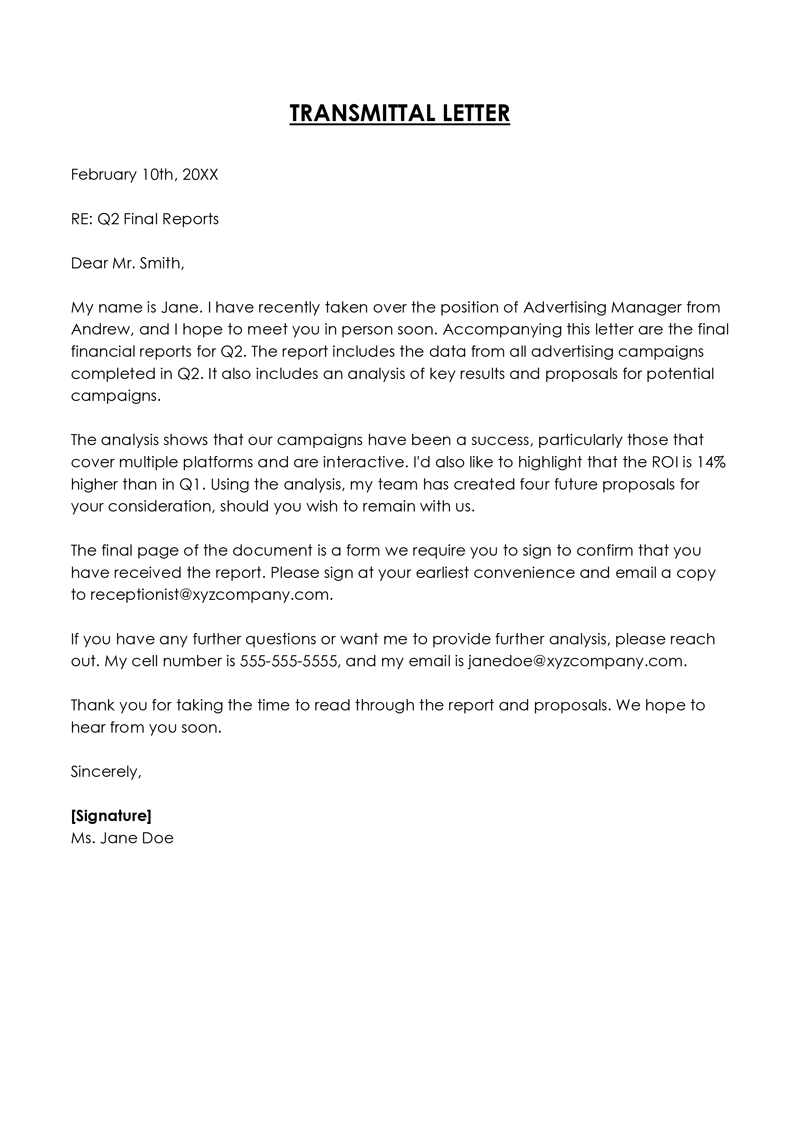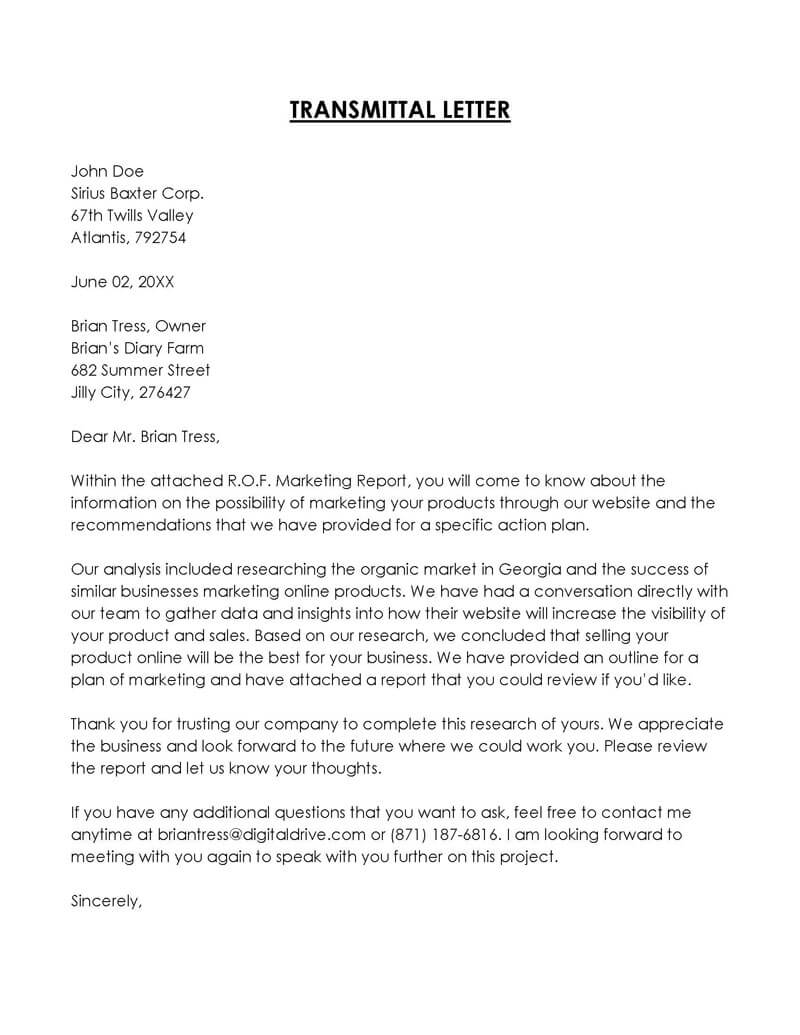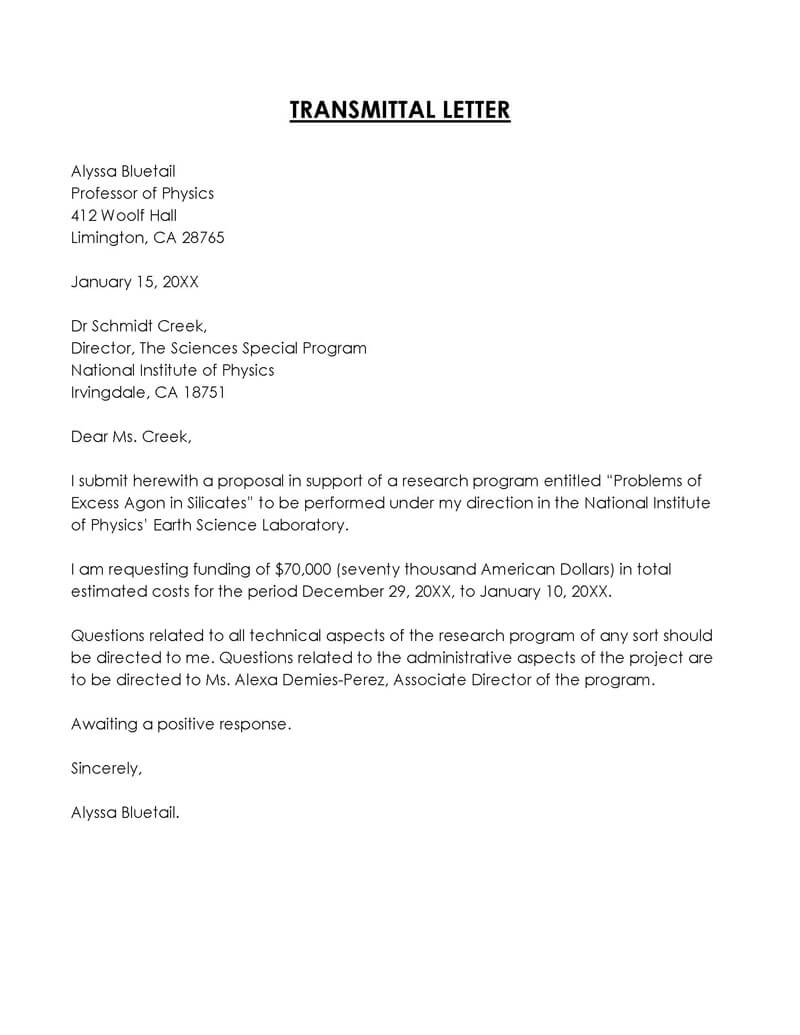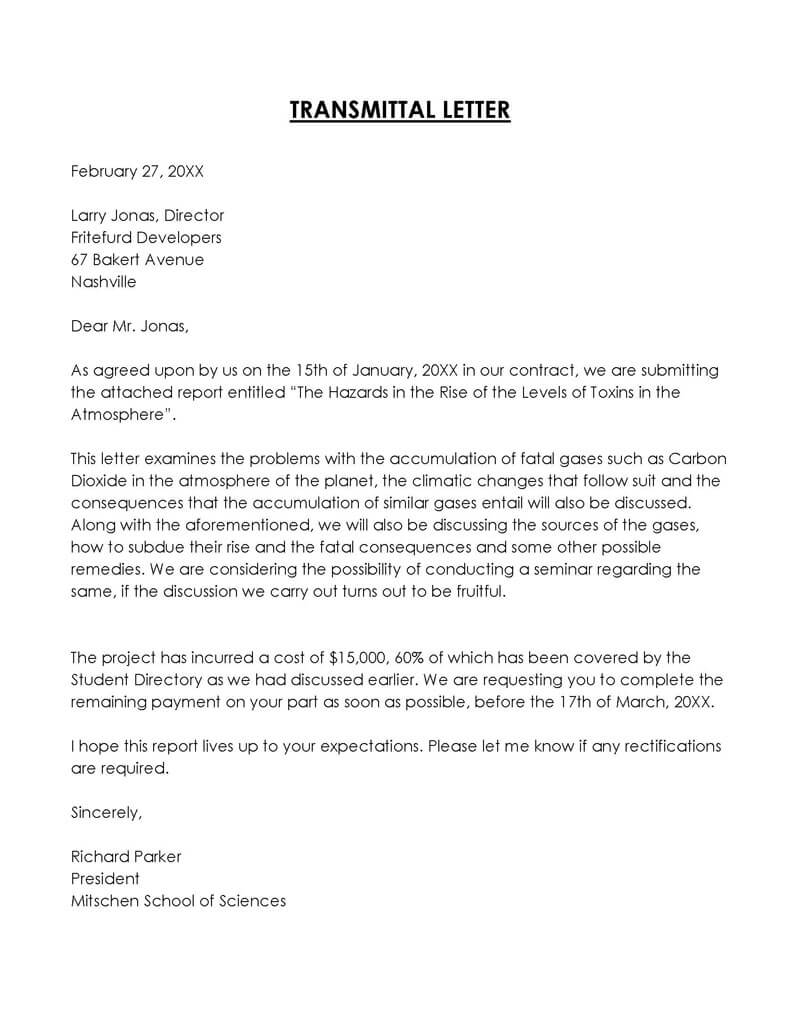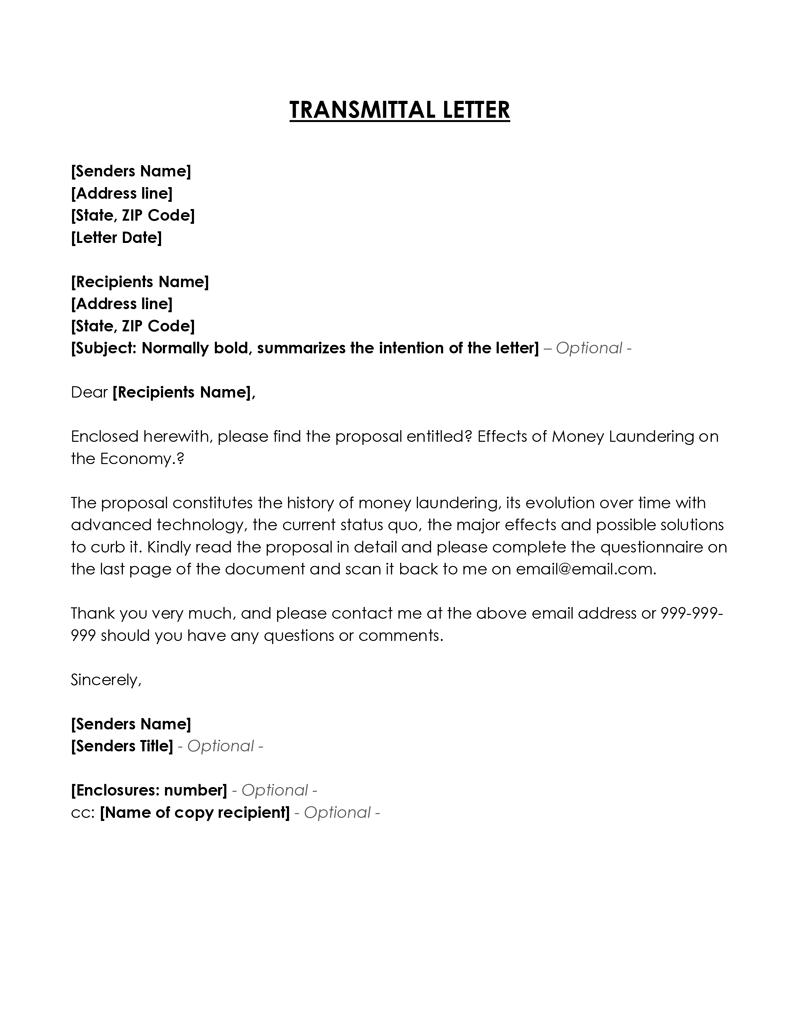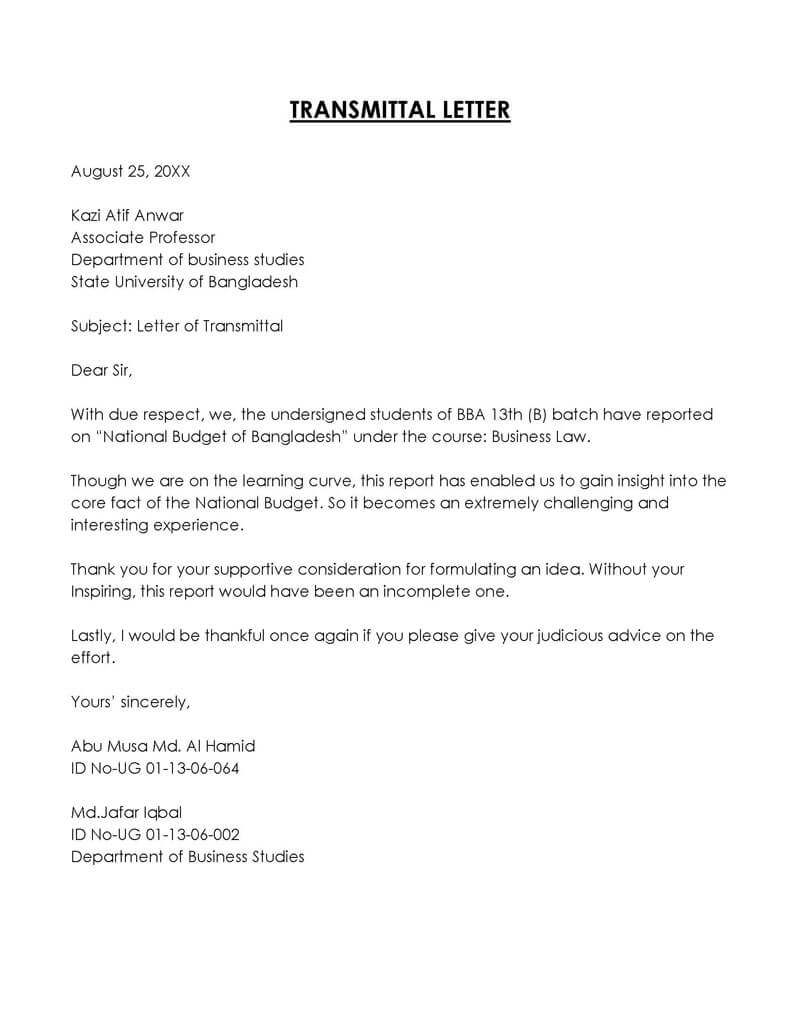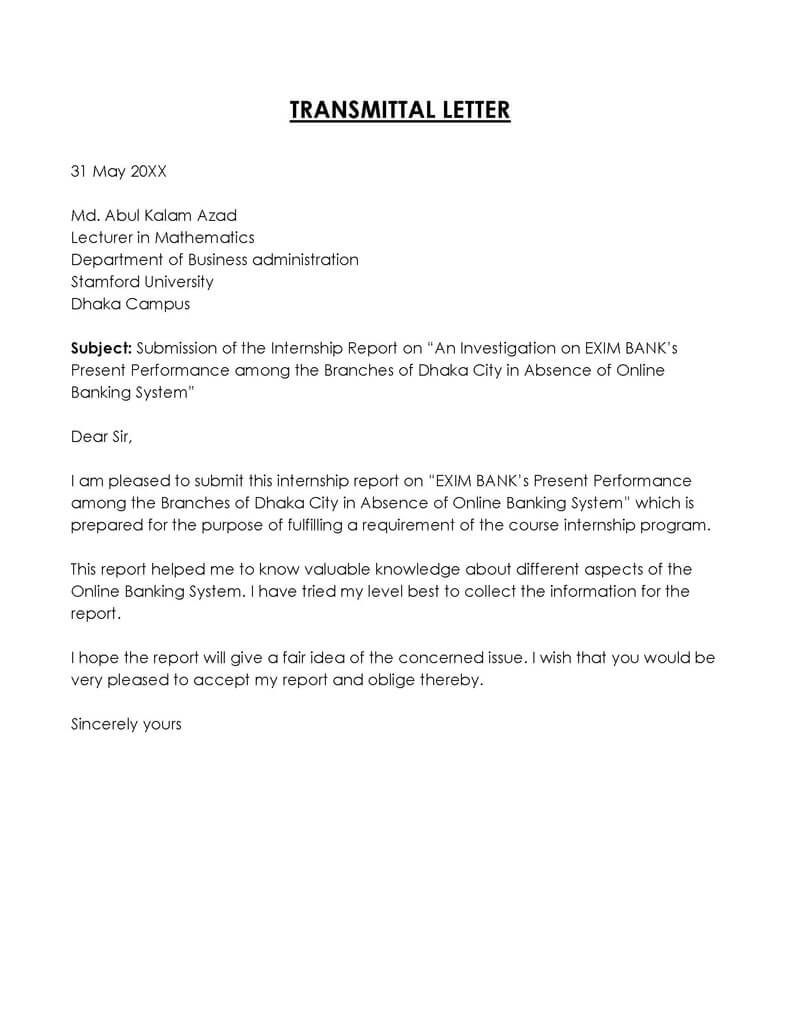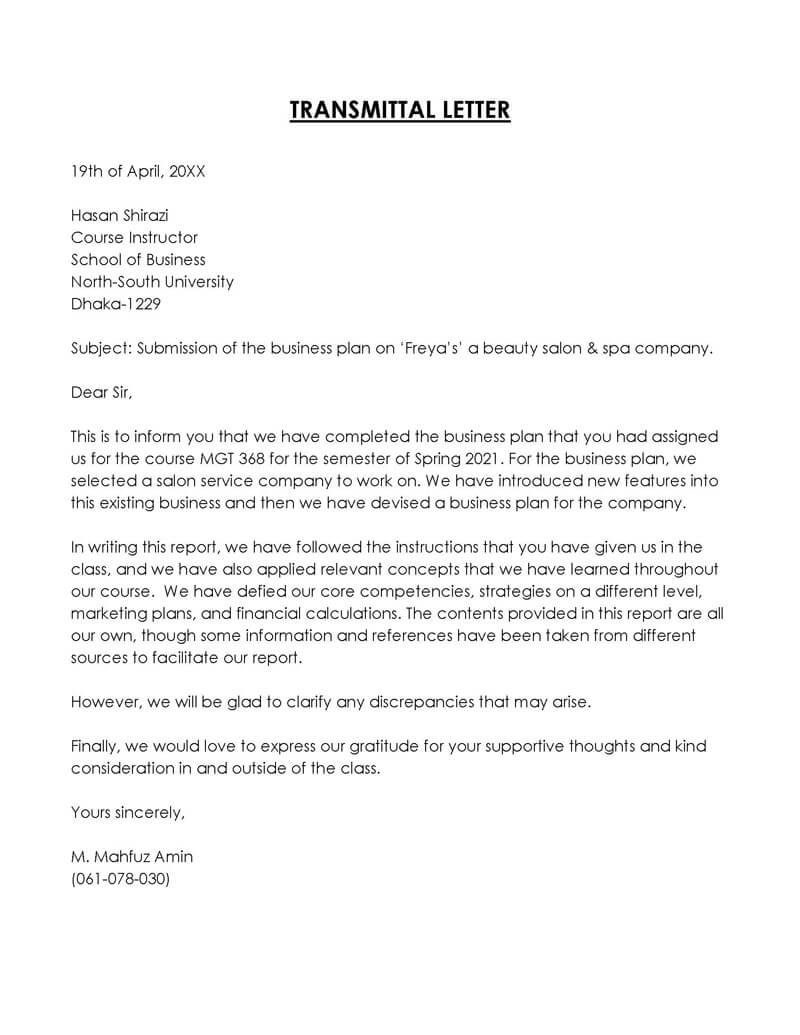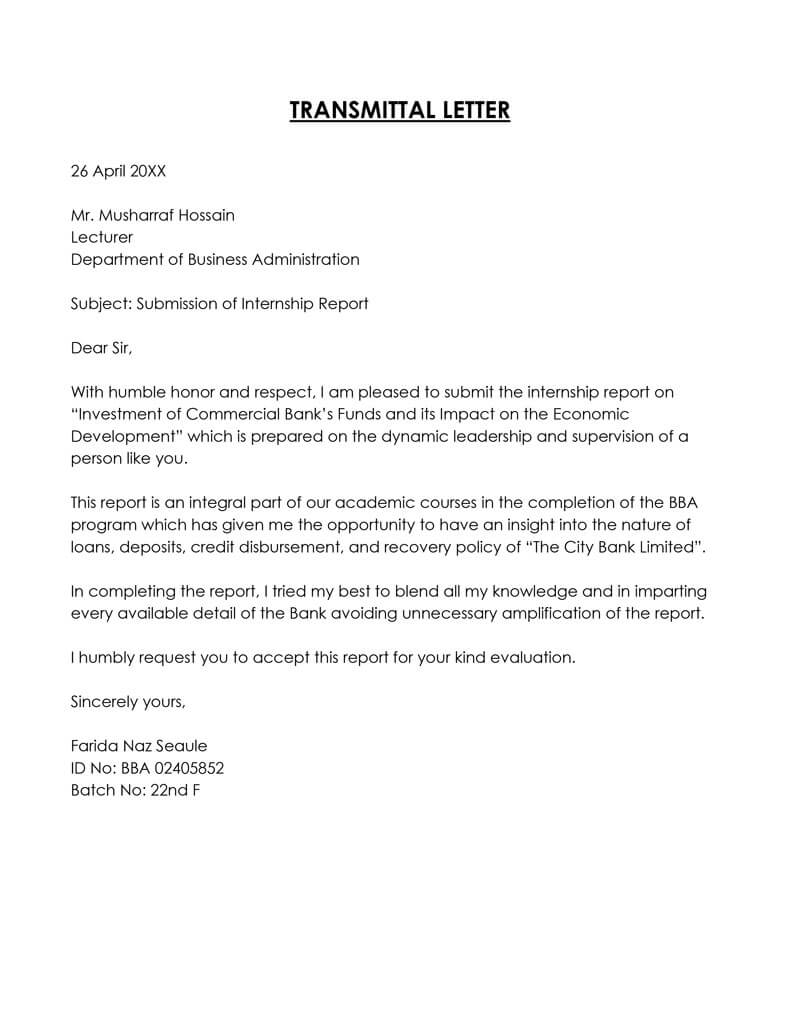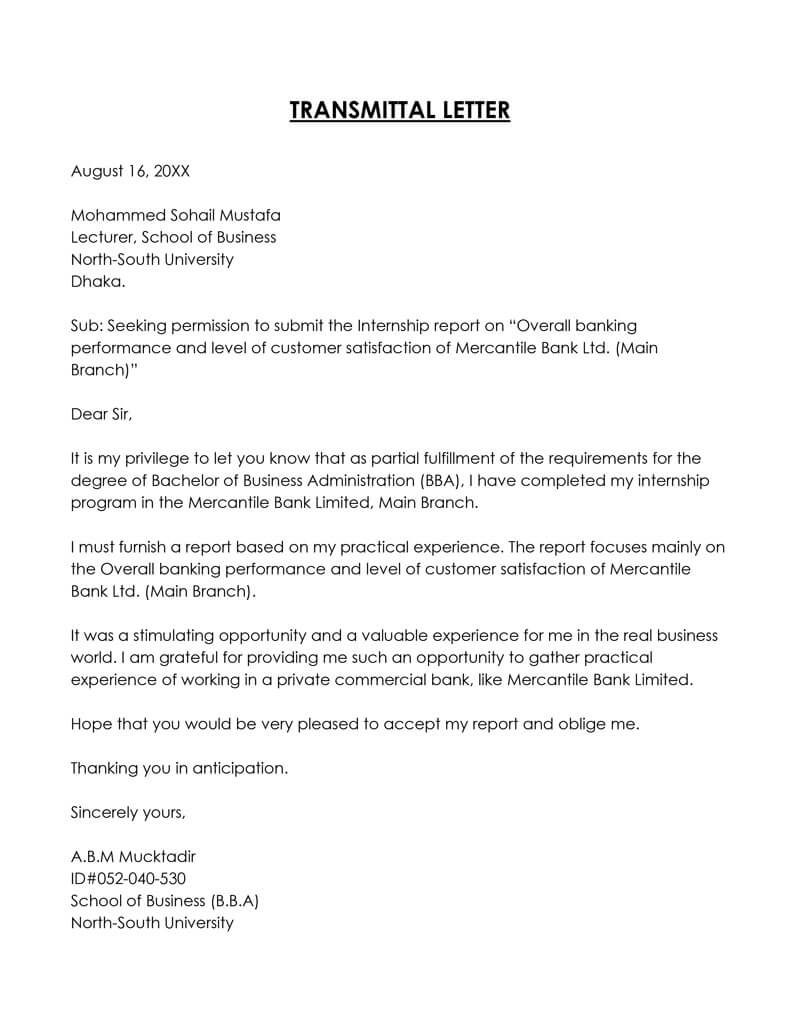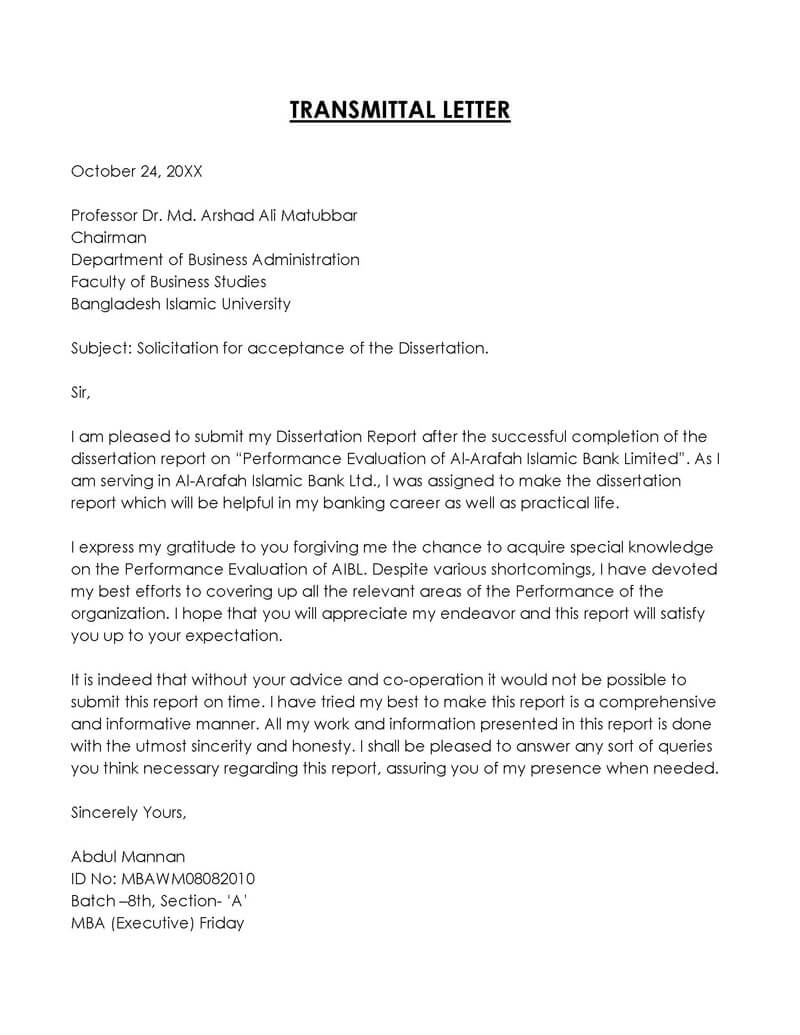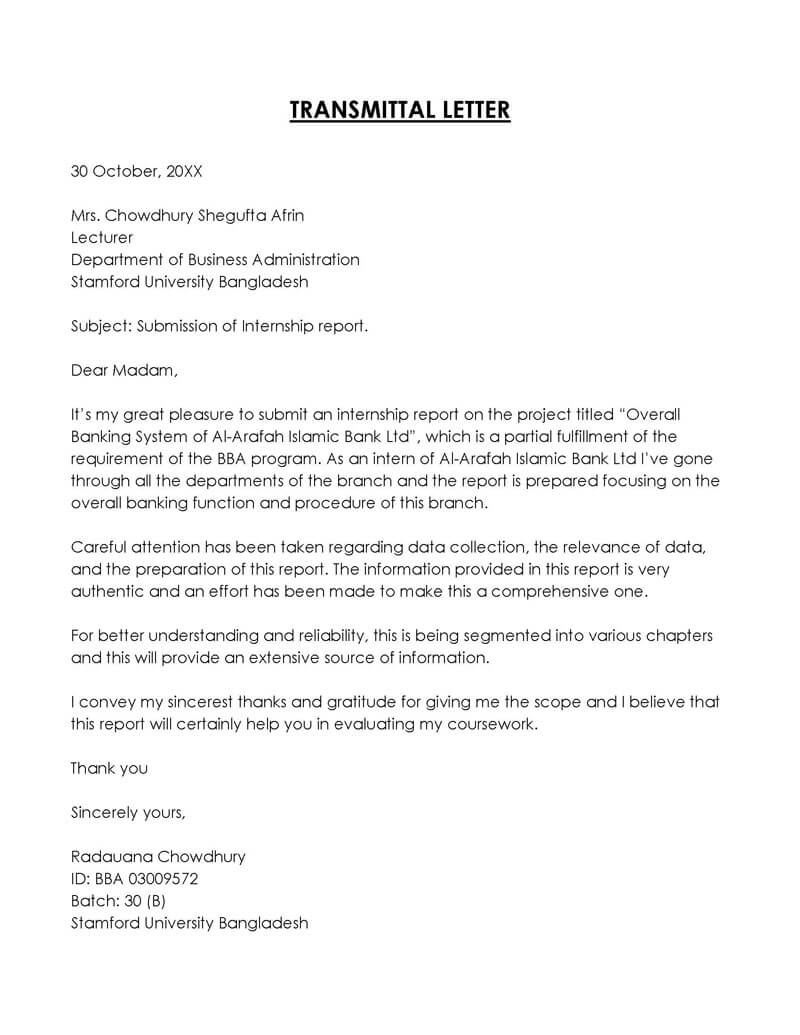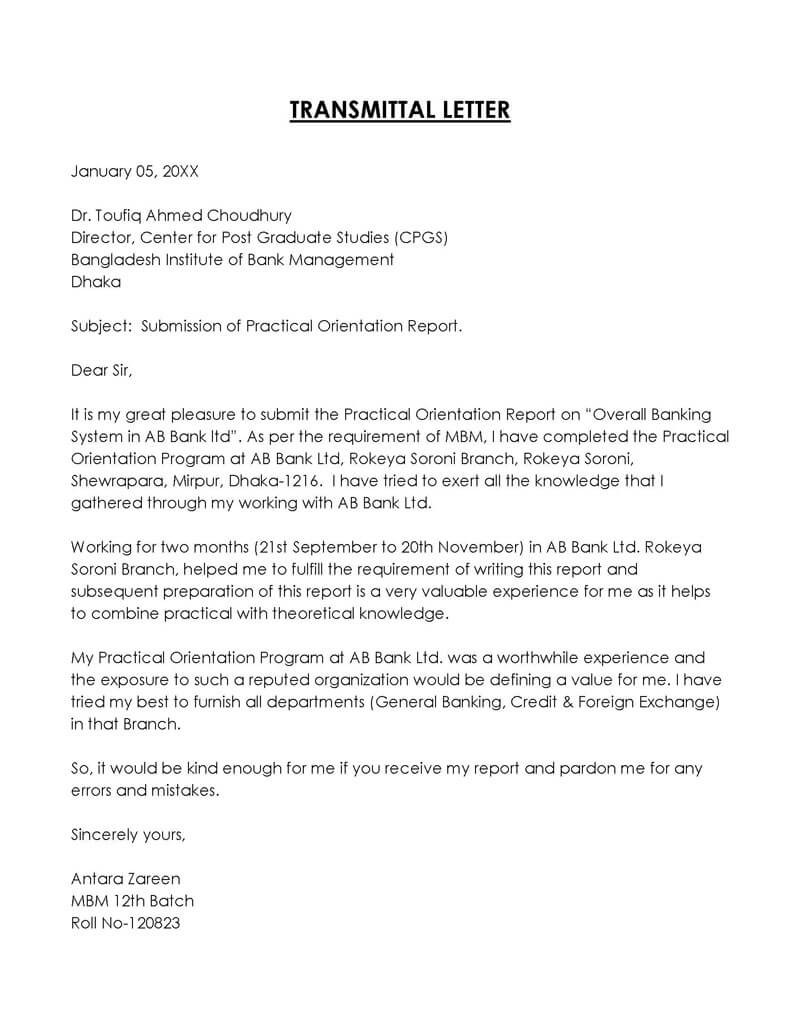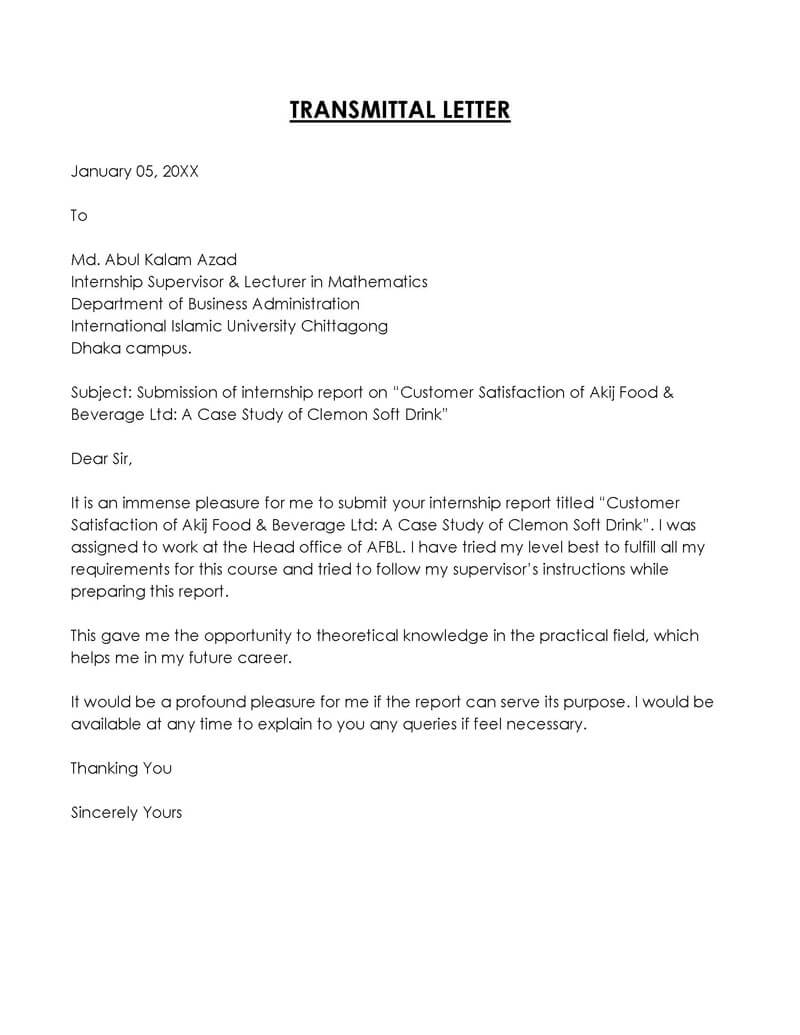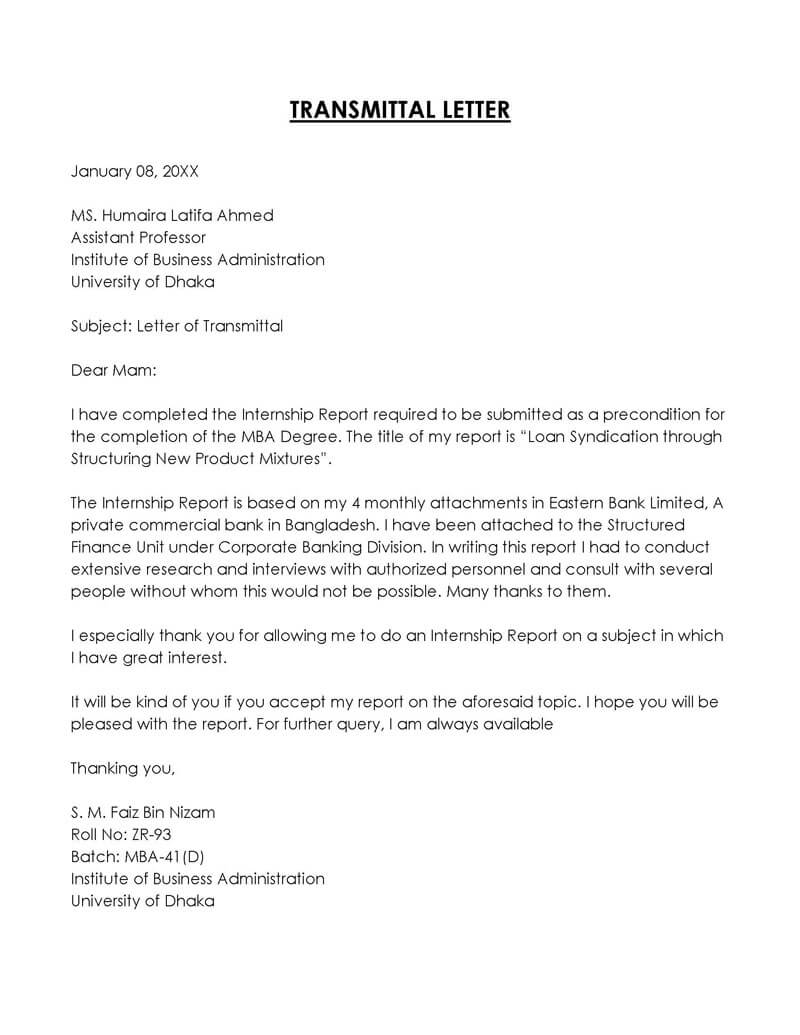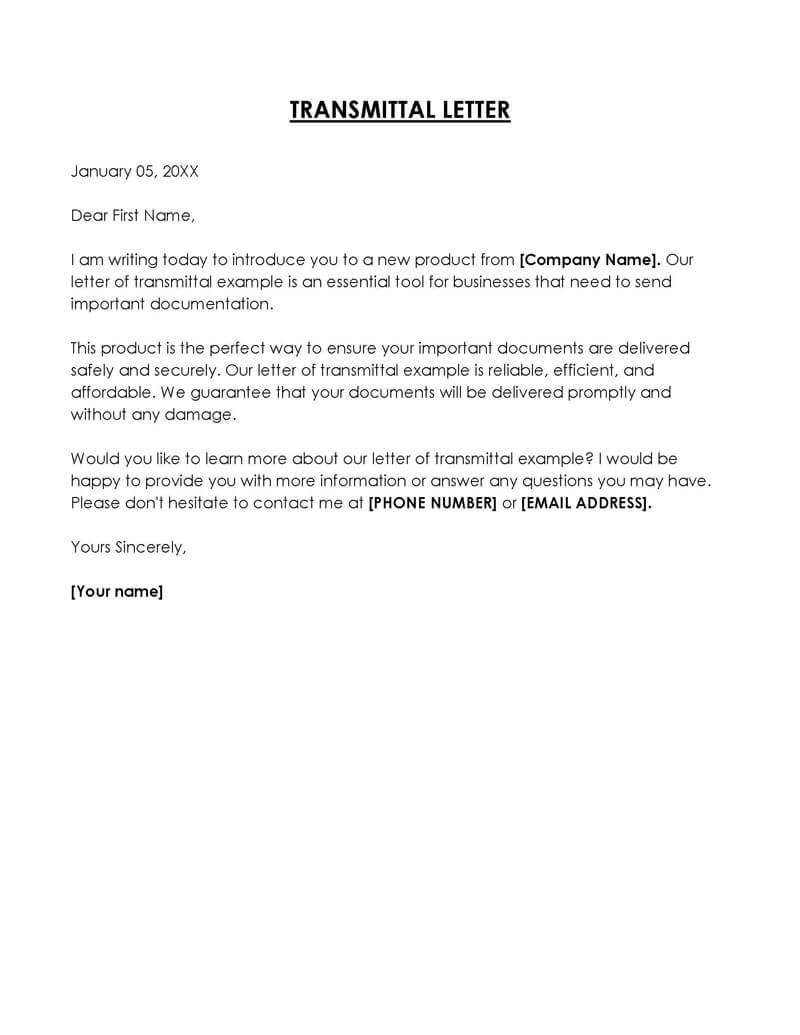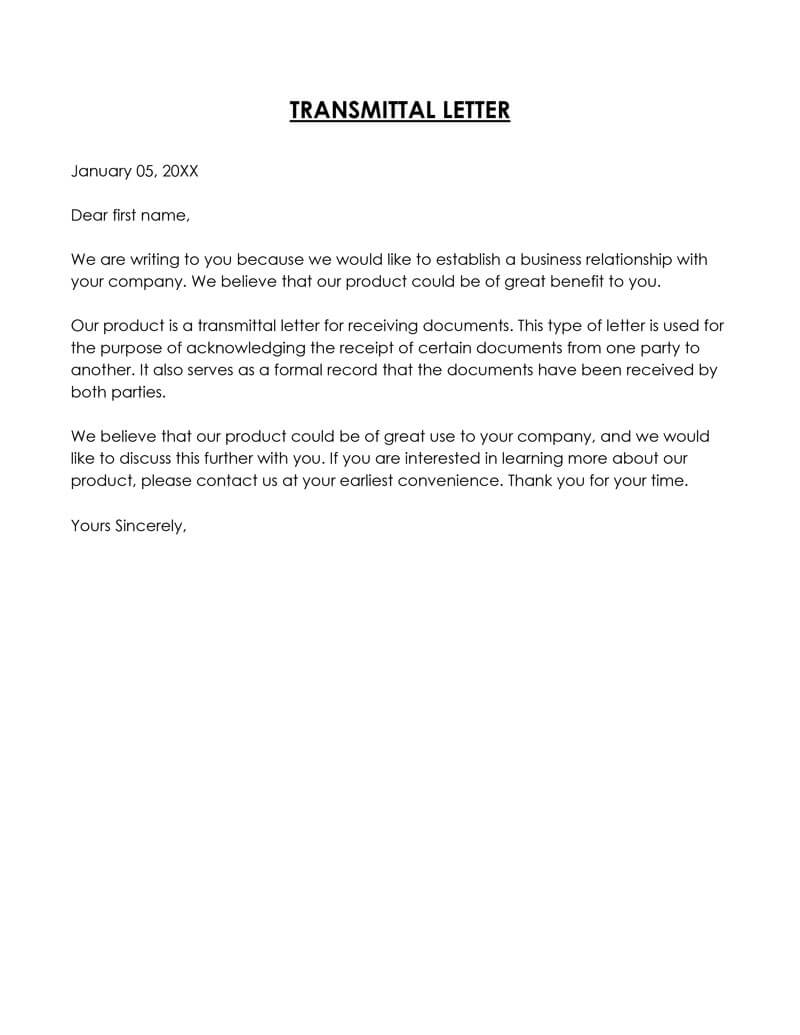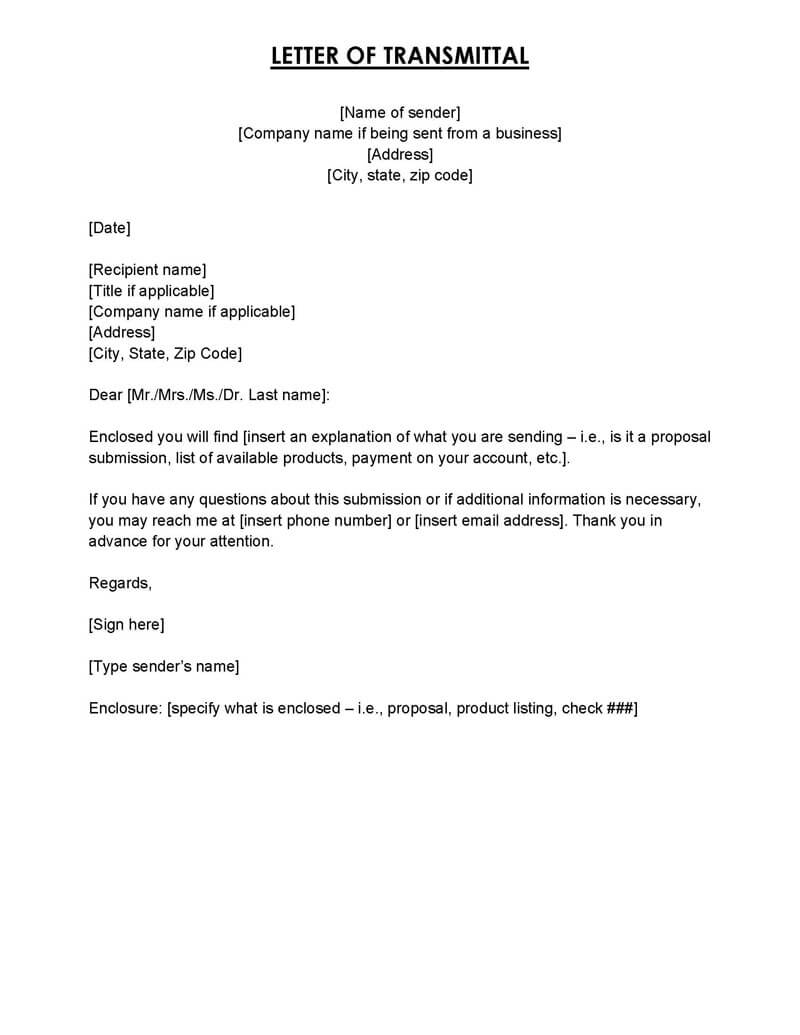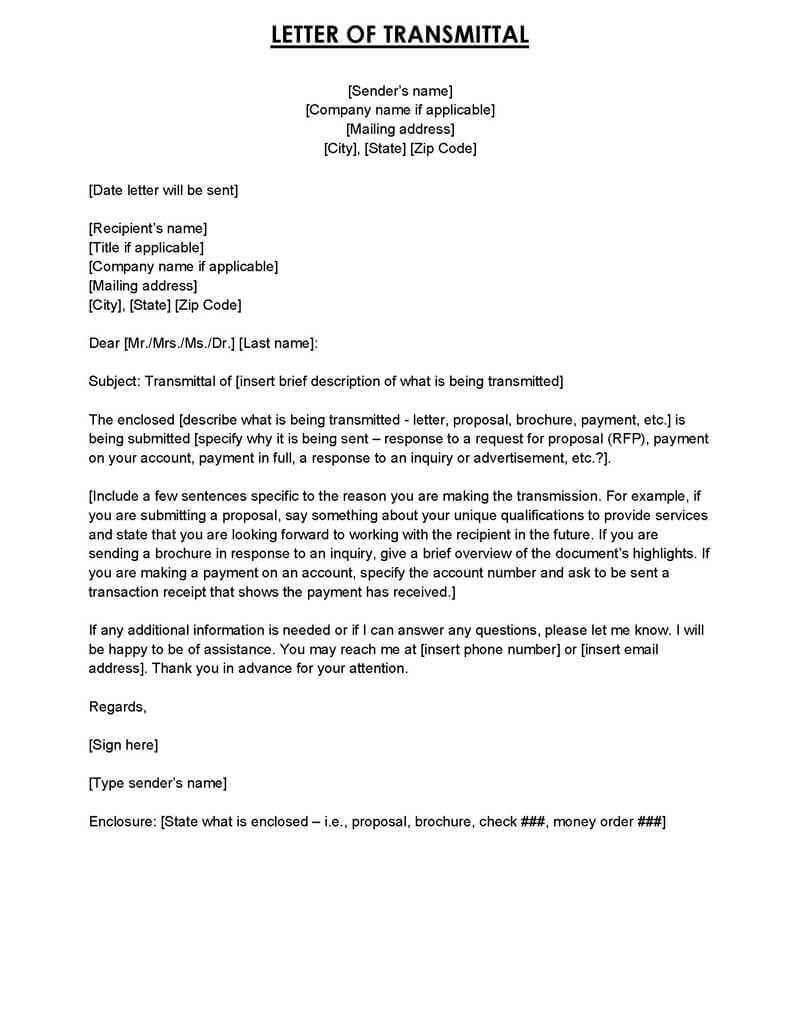When an individual sends a complicated letter to an organization, a short letter is attached to it to elaborate the content of the letter. This is called a transmittal letter. The purpose of sending the transmittal letter is to ensure the recipient understands the documents you sent. It also lets the recipient know who the document is from and why it was sent. It should come before the report on a separate page since it gives an overview of the complex letter. A transmittal letter may be written as a memo when sending a complex letter to members of a similar organization.
You should ensure that the transmittal letter is formatted as a standard business letter, as it is often sent to someone with higher authority in an organization. Your transmittal letter should be brief and of a specific purpose, as it is an overview of the actual report. It is essential to ensure that the letter has three paragraphs that provide a brief overview of the main ideas and that it is not a copy of the body of the report or the executive summary. Write the report’s purpose in your transmittal letter and indicate the necessary information.
Transmittal Letter Template
A transmittal letter elaborates the contents of the attached document for easier understanding of the document. Goodwill is established between the companies involved when the transmittal letter is well-written. You can use pre-made transmittal letter templates instead of writing from scratch. Pre-made transmittal letter template greatly aids you in saving time, avoiding confusion while writing, and also assist you in maintaining the correct format while writing a transmittal letter.
This website includes free and downloadable transmittal letter templates that can be customized to create a letter that best suits your needs:
When Transmittal Letter May be Used
Transmittal letters are essential when transferring sensitive and complex documents or letters to other individuals. This is because it allows the recipient to understand the document’s contents, enabling them to take further action.
The following are instances when you should consider using a transmittal letter:
- Your documents may be sensitive, so the recipient must handle them carefully. The transmittal letter can convey instructions and directions on handling the documents appropriately.
- Your documents may need to be reviewed for feedback, and you can use your transmittal letter to communicate that to the recipient.
- The recipient of the letter may receive many letters, necessitating you to indicate why your document should be read and evaluated. This prevents your documents from getting ignored and ensures your message is conveyed.
- You can use the letter to emphasize important areas of your document so that the recipient takes note of them.
- You can be working on a project and encounter unforeseen challenges making you deviate from it. The transmittal letter could be used to communicate the deviation, clearly explaining the circumstances that led to it.
- When giving reports, you can use a transmittal letter to explain different areas of the report. This allows the recipient to understand the decisions made on their proposals.
- A project you are involved in can have outcomes that were not anticipated, making it necessary to communicate the development through a transmittal letter.
What to Include in Transmittal Letter
A transmittal letter should have a particular format because it is a document used for official purposes. A well-written transmittal letter is important since it is often sent to the company’s executives, e.g., individuals with decision-making authority.
The following items should be included when writing one:
Both parties’ details and greetings
The name, position, and address of both the sender and recipient aid in preventing the document from landing in unauthorized hands as it clarifies whom the letter is from and whom it is intended for. The names of the organizations of both parties, the date the transmittal letter has been sent, and salutations are to be included in the letter as part of the header information.
For example:
John Lennon
Human Resource Manager
Wayne Corp
California 90210.
January 20, 2019
Tony Stark
Project Manager
Wayne Corp.
California 90210.
Dear Mr. Stark,
The purpose of the letter
You should begin the letter by briefly indicating the main reason you are writing it, then provide a general but brief description of the letter’s main content. If this is your first time communicating with the letter’s recipient, consider using a few sentences to introduce yourself to the recipient.
For example:
I am writing this letter to inform you about a letter that needs to be approved by the Manager of Total Co.
Details about the document
This section should outline the essential details, like the document’s name. This lets the recipient know the document and why they have received it. In addition, any information in the document that is critical or requires extra explanation should be emphasized to ensure that the recipient is aware of them and can take the necessary action.
For example:
Attached is a fieldwork report on engineered foods research. This letter is sent to the secretary of Mr. Bruce Wayne, Manager at Wayne Corp, to hand it over to him. The document contains the procedure for approval and requires the Manager’s signature and a stamp.
Any limitations about the document
The reader should be informed of any critical information indicated in the letter and abide by the outlined statements.
For example:
This letter needs to be viewed only by the Manager since it includes sensitive information concerning project proposals for the company.
Changes made in the document
When you make recent updates on the main document, it should be indicated in the transmittal letter. The reader may miss vital information when reading the letter. Therefore it is necessary to highlight those changes for clarity purposes.
For example:
Changes have been made to the date of the fieldwork; the new date is September 18, 2021, to September 24, 2021.
The explanation of what the recipient should do
You should give the recipient information on what to do upon receiving the letter. A summary of the actions in your transmittal letter tells the recipient what to do with the letter upon receiving it. If the document is sent to someone other than the intended recipient, like the company secretary, make sure you duly inform them to whom the letter should be delivered.
In addition, you should specify any additional information or action needed, like signing or returning the document to the recipient.
For example:
Kindly send this document to James Smith, Auditor at Wayne Corp. The attached document needs to be reviewed and returned to the office of the named address.
Invitation for follow-up and contact information
The recipient may want to contact you for more information on the instructions or guidelines on what to do with the attached document. Hence, you must include an invitation for a follow-up statement in your transmittal letter to ensure that the recipient knows the next course of action. You must add your contact information as well.
For example:
Questions regarding the proposal for the new project should be directed to me through my email, [email protected]. Questions about funds required for the fieldwork should be directed to the Treasurer, Mr. Michael Joseph.
A thanking statement
Good business practice is created when you show gratitude to the recipient. The reader may feel appreciated and send the best feedback when required, thus ending the business transaction on a good note.
For example:
I look forward to hearing from you; thank you for your time.
Signoff
You should also include the appropriate closing remarks in the transmittal letter and sign off professionally. Sign the document in ink if you submit the letter physically. If you submit it electronically, consider uploading a digital version of your signature or sign it using a touchscreen or pad.
For example:
Regards
[Signature]
List of attachments/enclosures
Name the documents you have attached to the transmittal letter after signing the document or an enclosure. This ensures the documents are in place, and one can notice when a document is missing from the ones attached.
For example:
Attached: The General Manager’s and employees’ heading for the feedback pay slips.
Tip: There is a difference between an attachment and an enclosure. An attachment is simply a document or a file attached to a letter, while an enclosure is a separate document. An attachment is also considered part of the letter, while an enclosure is not necessary to be included in the letter.
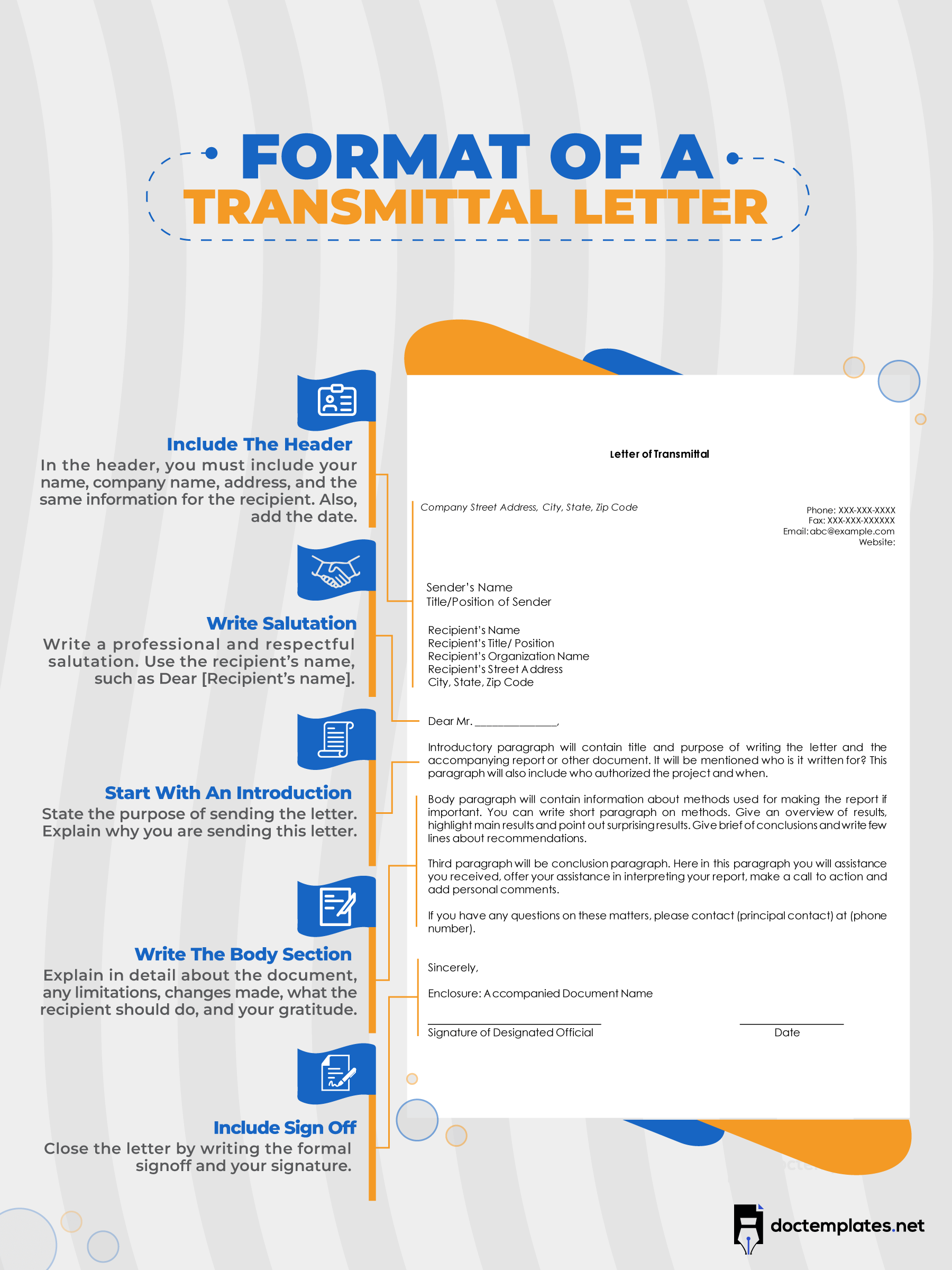
Sample of Transmittal Letter
Robert Freeman
Treasurer
Wells Co.
Oklahoma 19823.
September 13, 2022
Ed Shaw
General Manager
Wells Co.
Oklahoma 19823.
RE: Disbursement of project funds
Dear Mr. Shaw,
I am Robert Freeman, the principal treasurer of the Wells Company. I submit here a letter that needs approval and a signature from the General Manager to confirm the allocation of resources to fund the ongoing company project.
The project aims to improve the infrastructure of the Eastern wing. This will increase the floor space, the number of employees and better the conditions of the area. More resources are required as the previous budget is insufficient due to inflation in the economy.
Kindly direct this letter to Mr. Ed Shaw, General Manager. Questions regarding the budget and how the resources are allocated should be directed to me through my email [email protected]. Thank you for your time.
I look forward to hearing from you. Thank you for your time.
Sincerely
[signature]
Robert Freeman.
Consider the Tips
To make your transmittal letter effective, you should consider tips that allow your document to be delivered appropriately and for any necessary information to be communicated.
The following tips can be applied to your letter to ensure it serves its purpose to the reader:
Be clear
Being clear gives the reader an easy time understanding the letter. This enables the reader to comprehend the letter and give feedback if required. This saves you time communicating with the recipient since feedback is received faster.
Keep the letter short and direct
It would be best to go straight to the main points in your transmittal letter and keep the letter as precise and short as possible. This gives the recipient an easier time reading the document you issued. For optimal effectiveness, ensure your transmittal letter is not more than a single page long. Write it in one or two brief paragraphs only.
Be friendly
A positive tone may give a recipient a good impression of the sender of the transmittal letter. Apply the communication skills an individual uses in their day-to-day interaction with people. This creates a friendly yet formal environment when writing it, as the tone is light.
Attach it to the document
The transmittal letter should be sent at the same time the main letter is sent to the recipient. This avoids confusion and easily guides the recipient on the steps to handle the two documents issued.
Keep a copy
The letter may be required for future reference for both the sender and recipient, and keeping a copy is necessary. Proof may also be needed that communication has taken place; a copy of the letter may come to the rescue.
Use a standard business format
A transmittal letter is used for formal purposes, necessitating you to adopt a standard business format. You can adopt a block format when writing your transmittal letter to make your letter formally presentable. Also, using a simple design allows the recipient to understand your letter.
Check the company’s policy
The document cannot be retrieved once sent, and the sender must ensure they have not breached any of the company’s policies. Therefore, you should confirm that your letter has been written according to the company’s policy.
Proofread
Spelling and grammar errors should be avoided in your transmittal letter since they prevent the recipient from understanding your instructions. After writing your transmittal letter, it would be best if you go through it to ensure that you make every correction to make your letter error-free.
Conclusion
A transmittal letter is vital when sending a critical or complex document to the recipient as it elaborates on its contents. The correct format, grammar, and tone are vital in ensuring that your letter is perfect. Goodwill is generally created between the sender and the recipient when the letter has met its purpose. Proofreading your transmittal letter is essential to avoid a breach of the company’s policy and mistakes that could cost you. Communication through this letter between companies creates a good relationship. A good transmittal letter establishes a good image and impression of the company.
